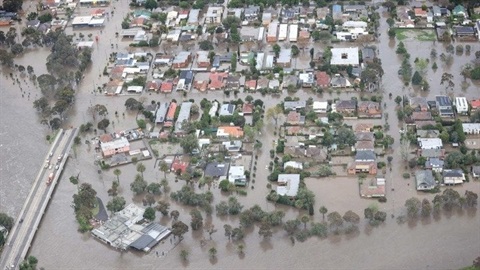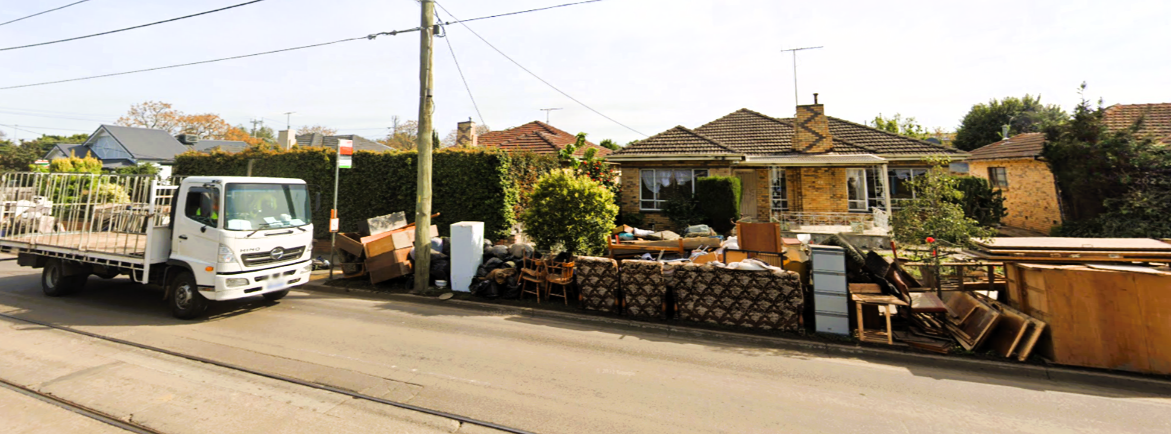Maribyrnong Flood Recovery and Prevention

In October 2022, record-breaking rain in Victoria led to the Maribyrnong River breaching its banks. Hundreds of City of Maribyrnong residents were displaced and more than 500 properties were significantly impacted.
Despite a significant recovery effort, many people were unable to return to their homes for months and some are still experiencing ongoing challenges related to insurance and repairs.
Council seeks State and Federal Government support to help address various issues still impacting community members affected by the 2022 Maribyrnong flood and to implement measures to prevent or mitigate future flood damage.
The broad nature of issues has resulted in five advocacy priorities:
The implementation of measures to incentivise resilience rebuilding through schemes such as a GST refund on materials or delivery of a resilient retrofit program.
Federal Government programs to address the issues of insurance availability, rising premiums and case handling from insurance providers.
Federal Government investment in improvements to the Australian emergency warning systems.
Further State Government investment in flood mitigation infrastructure, including a commitment of funding based on the outcomes of the Melbourne Water Flood Mitigation Study.
A State Government-sponsored independent report on the economic impact of the October 2022 Maribyrnong flood event, including a summary of the financial cost of the flood event on residents, business and government.
Council also seeks State Government funding and support for the State Emergency Service (SES). While this is not an advocacy priority, the issue will be raised along with the others.
Resilient rebuilding programs
Residents impacted by the October 2022 flood have reported that due to insurance requirements, they were required to rebuild their properties ‘as was’ as opposed to being given the opportunity to build something that will remain flood resilient into the future.
This means anyone rebuilding with more resilient materials, raising their houses, and/or taking other measures are doing so at their own cost, meaning this is not accessible for most.
The consequence of this is a continual cycle of investment of government funding in recovery, as opposed to prevention.
As a result, residents and businesses alike remain vulnerable in the face of future flood events. With the increasing frequency and severity of disasters due to climate change, Maribyrnong is at the forefront of the climate crisis. This warrants significant investment in this community.
Queensland and New South Wales have both implemented schemes aimed at supporting resilient retrofits after floods. These initiatives are designed to reduce future flood risks, enhance property resilience, and provide financial assistance to homeowners and communities affected by flooding.
Key ask
The State Government reconsiders its position outlined in the response to the Inquiry into the 2022 Flood Event in Victoria and establishes a program or scheme to incentivise resilient rebuilding in flood zones.
Links
Insurance availability, premiums and case handling
Community-needs assessments undertaken as part of the Maribyrnong Insurance Project provided a range of adverse insurance experiences involving Maribyrnong residents following the October 2022 floods.
Many of the experiences collated through the needs assessment process involved insurance availability and affordability, unreasonable premium increases, and woeful delays during the claims process, and the inability to adapt homes to be more flood resilient.

Such experiences have been echoed by the many inquiries, reports, and recommendations made to address these issues since 2022, including the Flood Failure to Future Fairness Report, which includes recommendations from the Parliamentary Inquiry into Insurers’ Responses to 2022 Major Floods; and Unsettled: Climate Risk and Cash Settlements in Home Insurance from Financial Counselling Victoria.
Consumers should be able to trust insurers to be there when the worst happens, which is why the Federal Government must ensure that policies surrounding house insurance and natural disaster claims put the consumer before the insurance companies.
More affordable and reliable insurance coverage is needed, along with flood resilience and mitigation measures, to prevent acute personal hardship, and prohibitive recovery and social welfare costs to taxpayers and ratepayers.
Key asks
Federal Government funded schemes to address insurance availability and affordability, such as an insurance subsidy for vulnerable or at-risk residents or a national insurance scheme.
Stronger regulations to improve the handing of claims (including one case manager through the whole case, where possible; product disclosure statements in plain language and translated; proactive personal support from insurance companies for an affected region; and regulation of unreasonable increase of premiums.
Funding for a program including a panel of specialist builders to be available free of charge to community to validate insurance scope of works documents.
As part of Council's efforts improve insurance outcomes for people affected by future flooding, Council partnered with GenWest and the Community Recovery Committee (CRC) to deliver the Flood Insurance Guide: A Maribyrnong Community Initiative, in English and Vietnamese, which features clear, accessible information on how and why to take out insurance, how to make a claim and the complaint process.
Emergency early warning systems
Early warning systems are critical for providing timely and effective information to enable communities and services to take action to prepare for emergencies. The Australian Warning System (AWS) has made improvements in consistency of emergency warnings, however there is a need for continuous improvement.
The October 2022 Flood of the Maribyrnong River took many residents off-guard, with reports of residents not aware of the flood warning until water had entered their homes. A review of the existing system and implementing improvements would enhance residents’ capacity to act early to protect themselves and their property.
Embedding a review of the flood warning system into its transition from Melbourne Water to the Bureau of Meteorology would provide an opportunity to enhance the accuracy and timeliness of flood warnings and mitigate the impacts of increasingly frequent and severe disasters on communities.
Finally, accessibility of systems is critical to meet the needs of communities that face barriers receiving and interpreting information. Public education is crucial to increase awareness of how to respond to warnings, promoting community resilience.
Recommendation 45 of the State Government's The 2022 flood event in Victoria report calls to improve the flood warning system so that warnings are:
- accurate with the most up-to-date information
- delivered in a timely way
- clear and easily understood
- consistently disseminated across different communities
- accessible in relevant formats and languages, where appropriate
Key asks
The Federal Government provides additional funding and support for research and enhancement of comprehensive early warning systems for emergencies across Australia, including:
Allocate additional funding for research, development, and implementation of advanced early warning systems across Australia to improve accuracy and timeliness of warnings
Review and enhance the flood warning system as part of the transfer of this function from Melbourne Water to the Bureau of Meteorology, with an emphasis on warning accuracy and timeliness.
Continue to promote the integration of early warning systems with emergency management frameworks and communication channels to enable stakeholder collaboration and seamless dissemination of warnings.
Consider the accessibility needs of at-risk communities in system improvements, including the culturally and linguistically diverse community.
Invest in accessible public education campaigns to raise awareness about effectively responding to warnings.
Progress
In its response to the report the State Government reported that:
In December 2024 the State Government announced it will invest $53 million in a modernised VicEmergency app and the central database for emergency services, Emergency Management Common Operating Picture.
This will also enable the app to be translated into different languages, ensuring a wider range of multicultural communities have the information they need to keep themselves and their families safe.
While this is great progress, information in other languages will also need to extend to preparedness information and other platforms, particularly accommodating those who are not well-versed with technology.
Findings from the Final Report also indicate that certain communities received delayed or inaccurate information from the VicEmergency service, making it more difficult for them to make informed decisions. Recognising this issue, VICSES has secured funding from the Federal Government through the DRF to deliver the ‘Consequence-Based, Intelligence Driven Warnings’ project which will provide more timely, tailored and relevant warnings during flood and storm emergencies.
We are yet to receive any insight on how this will be achieved and what will be different under the consequence-based, intelligence driven warning system.
In April 2024, Melbourne Water reported in its progress update the recommendation that its action to transition of the flood forecasting service from Melbourne Water to the Bureau is underway was on track.
This is positive news, but there is an opportunity as part of the hand over to the Bureau of Meterology to review the effectiveness of gauges and forecasts to identify gaps and opportunities for improvement
Flood mitigation infrastructure
The October 2022 flood caused significant damage to homes, businesses, infrastructure, and the environment, displacing residents and disrupting local economies.
Many affected communities are still recovering from this trauma, and the risk of future flooding remains high due to climate change and shifting weather patterns. Investment is necessary to address the vulnerabilities exposed by this event and prevent future catastrophic damage.
With population growth and development, as well as the increasing frequency and severity of extreme weather events driven by climate change, the risk of flood impacts grows.
Without investment in mitigation measures, this growth will exacerbate the damage from future floods, putting more people at risk. Investment in flood mitigation now can protect the community in the face of future flooding and reduce long-term recovery costs.
Investment in mitigation will also enhance the resilience of the local economy.
Key ask
A commitment from the State Government to strengthen flood mitigation measures along the Maribyrnong River in response to the October 2022 flood event, including a commitment to fund the recommendations from the Melbourne Water Flood Mitigation Study.
Independent economic impact report
The economic costs of flooding go beyond immediate damages. Business interruptions, job losses, and recovery expenses place a heavy burden on the community. A comprehensive report into the financial impacts will help quantify the costs of recovery on local business, residents and government.
This is a priority identified by the Maribyrnong Community Recovery Committee. and will encourage residents and businesses to take appropriate steps to prepare for emergencies and validate the experiences of this community. Quantifying the impact will also provide a clear understanding of the scope of the issue, which is required to determine options to mitigate future impacts.
Key ask
The State Government delivers a comprehensive report into the economic impacts of the October 2022 flood event on residents, businesses, local, state and federal government.
Additional SES funding
The State Emergency Service (SES) is a vital component of Victoria's emergency response framework, providing essential services to communities in times of need. Increased funding will enable the SES to better prepare for and respond to the growing number of disasters within the state.
Investing in training, equipment, and volunteer support will enhance the effectiveness and safety of SES operations. Strengthening community engagement will improve public resilience and preparedness, mitigating the impacts of disasters.
While this is not an advocacy priority, Maribyrnong City Council supports calls for sustainable State Government funding and support for the Victorian SES to enhance the capacity and capability of the SES to respond to emergencies across Victoria, retain and effectively train personnel, and provide effective community education programs to promote public awareness and preparedness for emergencies.